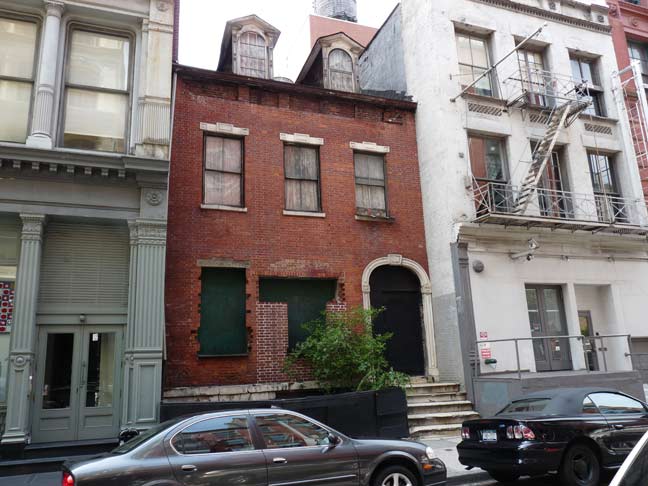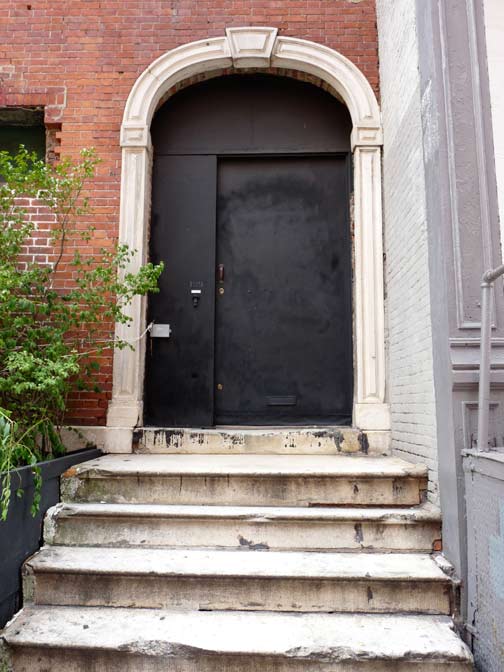Last week, I was fresh from stopping in the Apple store at Greene and Prince Streets in SoHo, banging around the MacBooks, IPads and IPhones. (The learning curve is going to steep if I ever buy any — track pads completely confuse me and I prefer to use mice and keyboards to do everything.) Wandering in the dead dog 89-degree heat up Greene, just before arriving at Houston I was greeted with this:

It’s a tiny Federal-style dormered mansion at #139 Greene with an arched doorway.

You can tell that care was taken in its design, because the keystone on the arch matches the lintels on the windows. The door, which had been 8-paneled wood flanked by Ionic columns, is gone, but the arch as well as marble steps are the originals.
Some internet research bore out my suspicion that this is a very old building. No doubt when Greene Street was first laid out it had a number of matching partners on either side. It was built in 1824, when James Monroe was President and J.Q. Adams was elected, by Anthony Arnoux (likely pronounced Ar-NOO) , a tailor by trade. By 1850, this was the tough part of town, and the Arnoux family moved uptown to 32nd Street. Only after that were the cast-iron front behemoths we associate with SoHo built. 139 Greene became a brothel for a few years after that.
139 Greene was never razed. When SoHo became an industrial neighborhood (the upscale boutiques arrived in the 1980s) it was home to paper wholesalers and other businesses. A loading dock had been built over the marble steps in the 1960s.
In 1973, the house was sold to art gallery manager Peter Ballantine, and it has apparently been undergoing renovations for the past 40 years. The ground floor windows have been bricked up and a grim black panel with a buzzer stand in place of the front door. However the upstairs windows and dormers seem unchanged since 1824, and those curtains don’t look like recent vintage.
Any news on the renovation progress?
7/23/13
More: Daytonian in Manhattan; Streetscapes by Christopher Gray, in NY Times
